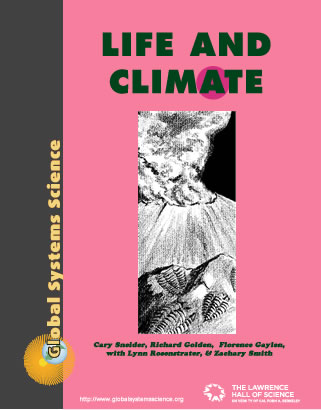LC6C. Stay Current—How and When Did Complex Life Begin?

Stay current for chapter 6
Understanding Evolution – a one-stop source for information on evolution.
2019-11-14. Alien genes from bacteria helped plants conquer the land. By Elizabeth Pennisi, Science Magazine.
2024-11-13. Best evidence yet that “Snowball Earth” saw ice cover the entire globe. By Evrim Yazgin, COSMOS. Excerpt: More than 700 million years ago, the entire globe was covered in ice in a period called “Snowball Earth”. At least, that’s what scientists think. Now geologists believe they’ve found the best evidence that the “Snowball Earth” was really a global event. For reasons which remain unclear, a runaway chain of events caused a massive shift in Earth’s climate about 720 million years ago. Global temperatures plunged and ice sheets kilometres thick are believed to have covered the planet from the poles to the equator. Called the Sturtian glaciation, Snowball Earth lasted about 60 million years. This was quickly followed by another global ice age called the Marinoan glaciation. Together, these big freezes made up the geological period called the Cryogenian (720–635 million years ago). …A new study published in the Proceedings of the National Academy of Sciences presents new evidence that these massive glaciers covered the entire globe. …After Snowball Earth thawed are the earliest examples of large organisms during the Ediacaran period (635–541 million years ago). Scientists still don’t understand the processes which led to this explosion in life, after which our planet was changed forever…. Full article at https://cosmosmagazine.com/earth/earth-sciences/snowball-earth-ice-globe/.
2024-10-21. An Ancient Asteroid Impact Both Harmed and Helped Life. By Douglas Fox, SciAm. Excerpt: Sixty-six million years ago a 10-kilometer-wide space rock fell out of the sky over what is now the Yucatán Peninsula in the Gulf of Mexico. …Yet the event’s infamous impactor was nothing compared with the asteroid that struck Earth 3.26 billion years ago, amid what scientists call the Archean eon of our planet’s 4.5-billion-year history. The Archean space rock in that impact, dubbed “S2,” was 50 to 200 times larger—big enough to blast at least 10,000 cubic kilometers of vaporized rock into the skies that then recondensed into molten droplets and rained back to Earth. Unsurprisingly, those circumstances would have been “really disastrous for early life,” says Nadja Drabon, a geologist at Harvard University. But her latest research suggests that—much like the more celebrated dino-killing space-rock impact—this vastly greater and more ancient collision also had an upside, giving Earth’s early biosphere a powerful boost. …her scrutiny of rock layers in South Africa showed that besides generating world-burning volumes of vaporized rock, the S2 impact triggered massive tsunamis and boiled away the ocean’s uppermost layer. But it also pumped phosphorus and other bioessential elements into the world’s nutrient-starved seas—triggering a bloom of life…. Full article at https://www.scientificamerican.com/article/how-earths-early-life-thrived-amid-catastrophic-asteroid-impacts.
2024-03-07. Peering into the past to identify the species most at risk from climate change. [https://www.science.org/doi/10.1126/science.adj5763] By Erin Saupe, Cooper Malanoski, et al, Science. Excerpt: A polar bear floating on a tiny piece of sea ice has become the iconic image of the extinction risks of climate change. But not all threats to species from our warming planet are so easy to see. That’s why paleobiologist Erin Saupe, Ph.D. student Cooper Malanoski, and their colleagues turned to the fossil record. By understanding which species fell victim to climactic fluctuations in the past, they aimed to get a better sense of which organisms might be most vulnerable now. “Despite the threat that climate change poses to biodiversity, we do not yet fully understand how it causes animals to go extinct,” Saupe and Malanoski explain in an article for The Conversation. So, the team examined data from nearly 300,000 marine invertebrate fossils from the last 485 million years, using statistics to examine how traits of the animals and their environment link to their likelihood of extinction. “Alarmingly, our research has, for the first time, identified climate change as a significant predictor of extinction,” the pair write. Species that experienced local climate changes of 7°C or greater were more likely to perish, regardless of any specific traits, they report in the most recent issue of Science. [Climate change is an important predictor of extinction risk on macroevolutionary timescales] …The best predictor of extinction was a small geographic range, but smaller bodies and a narrow temperature tolerance added to a species’ odds of dying out.
2016-01-11. Ancient Start of Animal Evolution Wasn’t Delayed by Low Oxygen. By Cody Sullivan, Earth & Space Science News (EoS; AGU). Excerpt: New research finds that Earth had sufficient oxygen 1.4 billion years ago for animals to evolve. Therefore, low oxygen levels probably didn’t hold back evolution, as scientists have long thought…. https://eos.org/articles/ancient-start-of-animal-evolution-wasnt-delayed-by-low-oxygen
2010 July 26. Translating Stories of Life Forms Etched in Stone. By Sean B. Carroll, The New York Times. Excerpt: …The difficulty posed by the Cambrian Explosion was that in Darwin’s day (and for many years after), no fossils were known in the enormous, older rock formations below those of the Cambrian. This was an extremely unsettling fact for his theory of evolution because complex animals should have been preceded in the fossil record by simpler forms… but we now have fossil records from the time immediately preceding the Cambrian. The rocks reveal a world whose oceans were teeming with a variety of life forms, including primitive animals, which is certainly good news for Darwin.
…This once-worrisome gap in the fossil record is a period of intense interest to geologists as well as paleontologists. The former have even given it its own division in the geological timescale. The Ediacaran Period, from 635 to 542 million years ago, is the first new geological period to be named in more than a century. Moreover, geologists have developed some intriguing theories about how dramatic changes in the Earth’s climate and chemistry during the Ediacaran may have allowed for the evolution of animals
…But finding these fossils has posed many new mysteries. Many of the creatures are so unlike modern forms that deciphering what they are and how they lived continues to challenge paleontologists. Prof. Andrew Knoll of Harvard University has likened the Ediacaran forms to a paleontological “Rorschach” test because different scientists often interpret the same fossil very differently.
…The kinds of animals that paleontologists have been especially eager to identify in the Ediacaran are those with bilateral body symmetry, the feature characteristic of the majority of modern animal groups, including ourselves.
…Recent chemical analyses of Ediacaran sediments reveal that the deep ocean lacked oxygen before and during that ice age, then became much richer in oxygen and stayed that way after the glaciers melted. That sharp rise in oxygen may have been the catalyst to the evolution of animals, including our ancestors.
2008 October 17. Evolution Primers. National Center for Science Education – articles on evolution.

